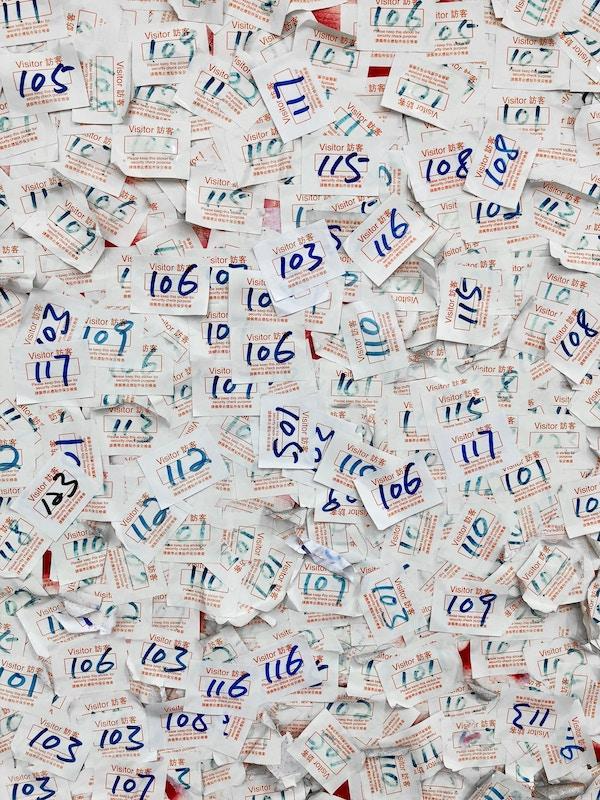I run several blogs (two of my own and several for clients) and to increase their effectiveness I constantly track statistics. I check the number of posts, the number of visitors, returning and new users, the most common keywords, as well as several correlations (how the changes I make work on the number of visits to a given page).
.I don’t mean the numbers themselves. They don’t say anything. I’m more concerned with which texts “get read,” which cause you to leave the page, and which encourage you to click further, to more posts, to newsletter pages or to place an order. On each of these pages I have texts (unfortunately not all of them) that are consistently popular. New readers come there all the time, but just as often those who have already visited come back. Each of them is different (well, you know!), but they all have certain characteristics in common. Do you want more people to start coming back to you too? Read on, and step by step, I’ll tell you what I discovered.
. .The texts that readers return to are a mix of different factors. A little bit of theme, a little bit of style, a little bit of formatting. One thing is certain. They’re a hit, and you, too, can have such driving forces on your site that won’t let them forget about you.
Texts that keep readers coming back. .
1. Get rid of clichés
.This is why I won’t write to get to know the audience and their problems. It’s obvious. Remember my previous article about 20 ways to get and keep a reader’s attention? You have (I do too) only 8 seconds to grab the reader’s attention. Don’t waste them on trivialities. After all, you know you’re supposed to be writing to someone. If you are just in the middle of your own text and took a break to read this article, go back and remove all the obvious. They are not needed by your readers.
.2. I have a plan
. I always have a plan. Although my operating style is chaos, I always have a plan in my texts. Why? Because the reader won’t understand my chaos, he won’t find himself in it. In your leap of thought, if that’s what you use, he won’t find himself either. Make a plan, with it you will smoothly go from point A to point B. Your reader will go with you, and the content you convey will settle nicely in his head and he will remember it better. You may find the inspiration in the article What to blog about? 9 topic sources and 34 article ideas
I always have a plan. Although my operating style is chaos, I always have a plan in my texts. Why? Because the reader won’t understand my chaos, he won’t find himself in it. In your leap of thought, if that’s what you use, he won’t find himself either. Make a plan, with it you will smoothly go from point A to point B. Your reader will go with you, and the content you convey will settle nicely in his head and he will remember it better. You may find the inspiration in the article What to blog about? 9 topic sources and 34 article ideas
3. Third – threes
.I will move on to the writing process itself. Often in texts there are calculations. In guidebooks and more literary texts, they are of a different nature. In guidebooks, rules, guidelines or features of the phenomenon under discussion are listed. In literary texts, on the other hand, they are mainly epithets, whose function is to embellish the story. The rule, however, is one – enumerate a maximum of 3 each (features, objects, events). Since the dawn of time, three has been significant and important to people. Look at the following three sentences:
.- Gosia was a nice and warm girl. .
- Gosia was a nice, warm and helpful girl.
- Gosia was a nice, warm and helpful girl.
- Gosia was a nice, warm, helpful and resourceful girl.
- Gosia was a nice, warm, helpful and resourceful girl.
The first one is kind of too short, it’s broken off. There’s something missing there. The third one is too long. How much can one say about this Gosia! It is the second sentence that “flows” in our head the most efficiently.  Apply threes. Threes can be used not only in this kind of calculation. Your paragraph can have three sentences, a paragraph three paragraphs, and so on. This is great for organizing your text, helping you focus your attention (and when focused, we remember and evaluate texts better) and comprehend the content contained.
Apply threes. Threes can be used not only in this kind of calculation. Your paragraph can have three sentences, a paragraph three paragraphs, and so on. This is great for organizing your text, helping you focus your attention (and when focused, we remember and evaluate texts better) and comprehend the content contained.
By the way. Do you remember what you were taught in Polish? Introduction, development and conclusion – it’s also divided into three!
.4. Speaking of which, forget about the lessons!
. .How many times has your essay been crossed out in red and not because of spelling or punctuation? My many!
But writing on the web, is not an essay or dissertation. A rigid framework severely limits creativity and gives no room for a conversational style. And I want to have a conversation with you. I’m not going to write a dissertation, because the introduction will already bore you and turn off the page.
. .Pardon. Let go of some of the rules. But you know what, get to know them thoroughly first. Then you can break them like an artist. Otherwise, you’ll show your lack of knowledge, which may offend some people.
Overlook. .
Break patterns creatively and always for a purpose. Art for art’s sake is no longer fashionable either.
.5 bullet points
. .We go back to those contents that allow you to easily refresh your knowledge. I, for example, go to those sites where I found condensed content rather than blocks of text. This way, scrolling is enough for me to remember what the article was about. Here it doesn’t matter whether the text is entertaining or educational. In entertainment and lifestyle texts, too, you can create numbered lists or bullets. Such are very likely to be returned to.
. . .6 References and Returns
. .Do you know how our brain works? When it acquires new knowledge, it tries to relate it to something it already knows and can associate. This discovery led to the development of mnemonics (methods of memorization). Associations are great! And for your text, it’s a way to keep and return readers.
.When you write about something, refer to what the reader may already know. Give him associations.
.Such an association is, for example, the third point of this text – under the three is about … threes. This is a great way to remember this rule, because it was associated with a number. Give ready-made mnemonics to your readers. When they need your text (entertaining or substantive), it will be easier for them to find it.
.In the text itself, also remember the references to what you mentioned earlier. By doing so, you fix your content, strengthen your position in the reader’s memory and become memorable to him. Therefore, when something fades from his memory, he will refresh himself by looking to you again. How to make such references? And look at the paragraph above 😉
.7. Anchor down!
. .Anchoring your content in users’ minds is an unusual, unobtrusive and very effective way to provoke returns. The anchor can be a story, your own experience, an example, a funny or surprising tidbit, an anecdote, or an out-of-the-box comparison.  It’s important for the anchor to evoke emotion, to stimulate the reader, to make him or her move from a receptive attitude to an active one. Receptive is when you’re just reading – over time your brain gets distracted. Such an anchor should make you think, arouse one of the reactions below:
It’s important for the anchor to evoke emotion, to stimulate the reader, to make him or her move from a receptive attitude to an active one. Receptive is when you’re just reading – over time your brain gets distracted. Such an anchor should make you think, arouse one of the reactions below:
- I didn’t know; .
- that’s funny; .
- that’s interesting; .
- I need to check it out; .
- hmmm, I wonder if that’s true; .
- wow! .
In elementary school, when I lacked an idea for some part of an essay, I would weave in an anecdote, not necessarily related to the topic of the paper. Sometimes it was underlined in red with exclamation points, and sometimes not. It remains unexplained whether it was my paper that was not read, or the anecdote woven in, that did not stimulate the teacher enough.
.Incorporate ones that are sure to stimulate!
. .8 Secret knowledge
.Content is the essence of any post. And no golden rule can defend poor content. As I mentioned in the first point, avoid clichés. Now we’ll go a little further. Give something that is unique, original, the only one. It can be your own experience or discovery. It can be the result of very careful research.  It is possible to write on any topic in a creative and unique way. Give something of value to your reader. Don’t duplicate content from well-read blogs (I don’t mean plagiarizing, that’s not allowed at all!). Don’t be repetitive. Be a pioneer! By the way – do you use benefit language in your texts?
It is possible to write on any topic in a creative and unique way. Give something of value to your reader. Don’t duplicate content from well-read blogs (I don’t mean plagiarizing, that’s not allowed at all!). Don’t be repetitive. Be a pioneer! By the way – do you use benefit language in your texts?
9. Rhythm and wave
. .Help your reader with rhythm and wave. Rhythm is determined by sentences. Build long and short. Mix, modify. If you have a good and proficient command of the Polish language, you can edit multiple sentences. However, they should be followed by short ones.
.How to keep the rhythm? Read what you write. Sometimes a little thing like replacing the conjunction “and” with “and” or vice versa makes it go through a sentence much smoother, smoother and lighter.  It increases the fluidity of your text. It causes the reader not to tromp along, as if it were a pavement. He doesn’t get tired, and the words assemble themselves in his head. Wave is related to rhythm. If your texts lack rhythm, the reader stumbles over sentences and does not ride the wave. He struggles as with a rough sea.
It increases the fluidity of your text. It causes the reader not to tromp along, as if it were a pavement. He doesn’t get tired, and the words assemble themselves in his head. Wave is related to rhythm. If your texts lack rhythm, the reader stumbles over sentences and does not ride the wave. He struggles as with a rough sea.
What is my way of rhythm and wave? I speak, sometimes aloud, sometimes in a whisper, what I am currently writing. This allows me to keep the correct sentence formation, choose appropriately long words and play with the length of sentences. This way, readers, you don’t get tired.
. .10th link database
. .Nobody is an isolated island. Likewise, your texts are not the only ones on the entire web on a given topic. If you use this fact to your advantage, you can only profit from it. If there are sources on the web that agree with your thesis, you can cite them as an extension of your arguments. If there are contrary ones, you can cite them as a voice in the discussion.
.It could also be that they are simply a different perspective on the topic you are addressing. Then you can cite these links as another point of view. You will not only broaden the horizon of your text, but also influence the broadening of horizons in your readers. In such a situation, you can simply show that it is not only your point of view that is available.
.Don’t be afraid of competition. Make it your strength. And why should you? When your readers are looking for a broad view of a topic, they’ll glance to you, because it’s just easier for them.
.11 Simple, not plain
. .The difference between simple and plain style is thin, and sometimes I feel it is crossed. Just because a blogger throws in a vulgarity, it doesn’t yet mean that he is a simpleton. These are words that belong to our language and sometimes help to emphasize power of speech. However, if you start treating your readers as not very smart people, then even without vulgarities you will write in a simplistic way. It’s worth watching out for that.
.Sometimes, wanting to explain an issue thoroughly, you can fall into such a trap. On the other hand, however, you should not write in an overly contrived manner. Complicated syntax or a very formalized vocabulary won’t win you any sympathy either. The golden mean – this is the best way.
.12 Universal tools
.For many topics covered, you can create a tool – checklist, form, planner, table and many others. If you prepare such a tool for your text, it will also increase the chances that the reader will return to the text you have written.
.Maybe he will get disappointed once downloaded, or maybe he will want to send the link to you to someone friend. This is not always the case, of course. Not every text can be encapsulated by a tool. But if it is possible – it is worth it. An additional benefit is that the attached file also indexes.
.13th lucky number
. .
 Dorota Bajczyk
Dorota Bajczyk